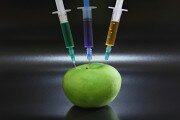Popular Garden Herbicides Can Harm Your Pets
With summer around the corner, chances are that we all will spend more time in our gardens. If you are someone who takes pride in having the perfect green lawn, then this alert is for you…
Deadly lawn
All those easy-to-buy herbicides and lawn treatments, the ones that kill the weeds and make your backyard look like a perfect cricket pitch, could be downright deadly for your pets.
One of the most widely used herbicides in the world is called 2,4-D – named after the ingredients that were used in Agent Orange – and it was used during the Vietnam War by the US government who sprayed Agent Orange (or Herbicide Orange) on their enemies’ crops to disrupt their food supply.
According to a study by one Vietnamese scientist, Dr Nguyen Viet Nhan, children in the areas where Agent Orange was used have multiple health problems, including cleft palate, mental disabilities, hernias, and extra fingers and toes.
Suffice to say, if exposure to 2,4-D has such a detrimental effect on human health, can you imagine what it will do to Rover and Pickles when they roll around on your lawn?
In fact, studies have found that dogs are much more sensitive to the toxic effects of 2,4-D than people are. It can cause acute kidney failure in puppies, and may even cause deadly cancers.
Researchers have found that dogs living in homes where 2,4-D was used died of cancer at twice the expected rate. The dogs were much more prone to develop lymphomas and non-Hodgkin’s lymphomas.
You’ll also want to steer clear of Monsanto’s Roundup (glyphosate), another popular herbicide. The instructions will say that once dry, the area is safe for pets to be in. But the chemical has been found to cause diseases ranging from hormone disruption to all kinds of cancers.
So, how can you get that perfect lawn without damaging the health of your pets?
Here are some tips from the US Environmental Protection Agency (EPA) on how to maintain a great looking lawn without using toxic herbicides:
- Mow your lawn high, often and with sharp blades: This will produce stronger grass that has fewer pest problems. The EPA says that the ideal length for most turf grasses is between 2 ½ and 3 ½ inches.
- Don’t bag the clippings: By leaving the grass clippings where they fall you’ll not only be saving time and trouble, but will be recycling nitrogen that will make your grass healthier.
- Water deeply but not too often: The best way to water your lawn is one that is similar to a slow, soaking rain. And water only when the grass begins to wilt from dryness.
If you use a gardening service to maintain your lawn, be sure to tell them that your garden is a toxic herbicides-free zone. After all, what fun is a beautiful garden and lawn when you have to post a sign on it saying “keep off the grass.”
Did you find this information useful?
Then why not get more expert health recommendations just like this delivered direct to your inbox?
"It is truly refreshing to read a newsletter on the topic of alternative medicine which is scientifically based and reviewed by professionals..." - Robert Sinott
We respect your privacy and will never share your details with anyone else.Disclaimer: Bear in mind the material contained in this article is provided for information purposes only. We are not addressing anyone’s personal situation. Please consult with your own physician before acting on any recommendations contained herein.
Sources:
“Harmful herbicide: EPA’s unreasonable delay protecting people from 2,4-D” Gina Solomon, NRDC Switchboard, switchboard.nrdc.org










